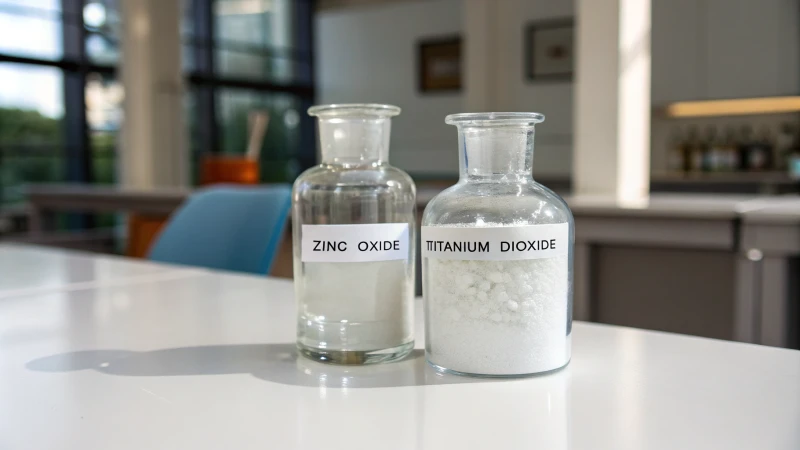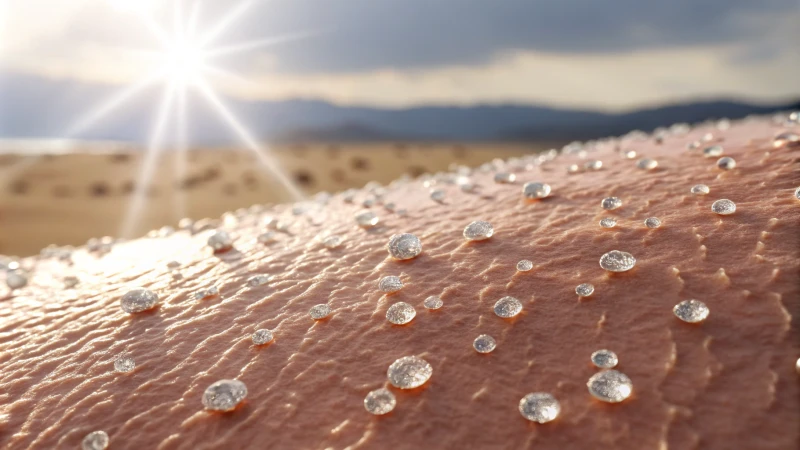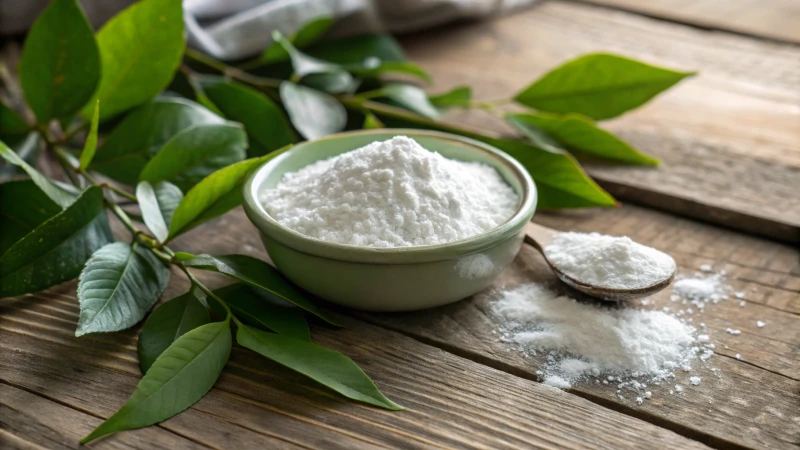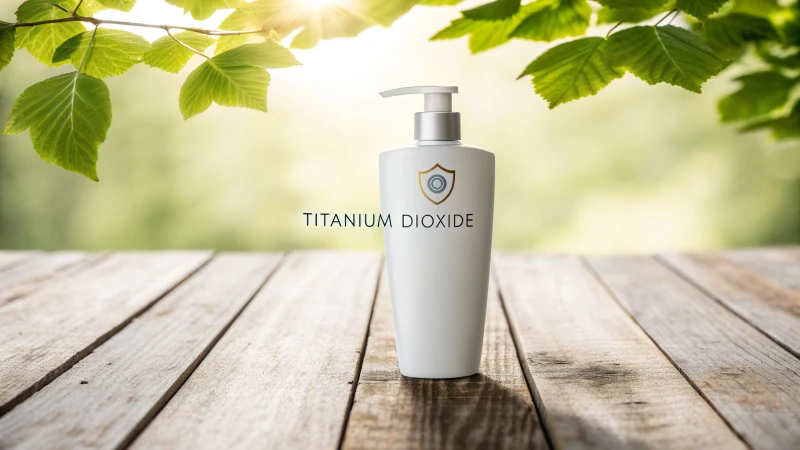
Understanding sunscreens might feel very confusing, right? I remember being in the store, feeling overwhelmed by all the options. Zinc oxide and titanium dioxide really stand out to me. Let's explore why they are so unique!
When choosing between zinc oxide and titanium dioxide for sunscreen, think about their effectiveness against UV rays. Remember your skin's needs. Zinc oxide offers very good broad-spectrum protection. Titanium dioxide feels lighter on the skin. This lighter feel suits daily use.
I love spending time outdoors, so protecting my skin is very important. I tried zinc oxide and titanium dioxide sunscreens. Each type offers unique benefits. Zinc oxide has become my favorite for long beach days. It provides broad-spectrum protection and soothes my sensitive skin. I choose titanium dioxide on days when I prefer a lighter feel. Titanium dioxide glides on smoothly. It doesn’t leave a chalky residue. This sunscreen becomes a game-changer for quick outings. I get sun protection without the fuss!
Zinc oxide provides broader UV protection than titanium dioxide.True
Zinc oxide offers broad-spectrum protection against both UVA and UVB rays, making it generally more effective than titanium dioxide.
Titanium dioxide is heavier on the skin compared to zinc oxide.False
Titanium dioxide is often preferred for its lighter feel, making it less heavy than zinc oxide formulations.
What Are the Key Differences Between Zinc Oxide and Titanium Dioxide?
Choosing a sunscreen with zinc oxide or titanium dioxide can seem confusing. I recall feeling unsure about which ingredient suited my skin when I first stood in the sunscreen aisle. Let's explore these two ingredients and discover their benefits.
Zinc oxide gives broad UV protection. It is great for sensitive skin. Titanium dioxide mainly shields against UVB rays. It feels lighter on the skin. Pick based on your skin's needs. Choose carefully.

Protection Spectrum
Zinc oxide protects you like a reliable friend. It provides broad-spectrum protection, covering both UVA and UVB rays. I choose zinc oxide often, especially for long outdoor days. It comforts me knowing I’m fully covered. On the other hand, titanium dioxide mainly protects against UVB rays and offers some UVA defense. This makes it a good option too, but it might not cover everything.
| Ingredient | Best For | Texture | Potential Irritation |
|---|---|---|---|
| Zinc Oxide | Sensitive skin | Thick, pasty | Low |
| Titanium Dioxide | Normal to oily skin | Lightweight, less visible | Moderate |
To explore more about protection, visit sun protection factors1.
Skin Compatibility
I’ve experienced many skin irritations, so I prefer zinc oxide for its soothing qualities. It's usually better for sensitive skin because it irritates less than titanium dioxide. One time, I tried a sunscreen with titanium dioxide. It felt light but didn't suit my skin.
If you're curious about formulations for sensitive skin, check formulation tips2.
Application and Appearance
A noticeable difference is how each ingredient looks on the skin. Zinc oxide might leave a visible white cast, especially in large amounts. The first time I applied it, I felt like I was dressing up for a play! Luckily, new formulas with smaller particles reduce this problem. Titanium dioxide generally blends better with the skin, which is nice if you want something less obvious.
- Zinc Oxide: Noticeable white cast (especially if a lot is used)
- Titanium Dioxide: Minimal visible trace
For tips on application, explore application methods.
Regulatory Considerations
Both ingredients have approval from many health bodies, so they are safe choices for sun protection. However, I learned that rules can vary by region for their use in products. Being aware of these differences is helpful. Both Europe and the U.S. allow these ingredients in sunscreens, though they might have different limits.
For information on rules affecting sunscreen ingredients, visit regulatory guidelines3.
Zinc oxide offers broad-spectrum UV protection.True
Zinc oxide protects against both UVA and UVB rays, making it ideal for comprehensive sun safety.
Titanium dioxide is better for sensitive skin than zinc oxide.False
Zinc oxide is recommended for sensitive skin due to its soothing properties, unlike titanium dioxide.
How Do Zinc Oxide and Titanium Dioxide Protect Against UV Rays?
Do you wonder how ingredients in your sunscreen stop painful burns? Zinc oxide and titanium dioxide protect the skin. They keep harmful UV rays away. Sunny days can be safe and pleasant. Enjoy sunny days without worry.
Zinc oxide and titanium dioxide protect the skin from UV rays. They form a physical barrier on the skin. This barrier reflects and scatters UV radiation. These ingredients are very important in effective sunscreens. They keep our skin safe from harmful exposure.

Mechanisms of Protection
I remember using mineral sunscreen for the first time on a beach trip. The comfort of feeling protected from harsh sunlight felt like a warm hug! Zinc oxide and titanium dioxide act as physical (mineral) sunscreens by creating a protective barrier on the skin that reflects and scatters UV radiation. They stay on the surface and block UV rays, letting us enjoy outdoor activities without worry.
-
Zinc Oxide: This ingredient stands out in the sunscreen world! It protects against both UVA and UVB rays. I remember it saved my skin during a long park day, allowing me to enjoy the sun safely. Sun protection is crucial.
- UVA rays cause early skin aging and some skin cancers.
- UVB rays mostly cause sunburn.
-
Titanium Dioxide: While not as strong against UVA rays, it works well against UVB rays. I love products with titanium dioxide for daily use. They feel light on my skin, perfect for busy mornings!
Comparison Table
| Ingredient | UVA Protection | UVB Protection | Skin Type Suitability | Visible Residue |
|---|---|---|---|---|
| Zinc Oxide | Excellent | Excellent | Sensitive, all types | More noticeable |
| Titanium Dioxide | Moderate | Good | Oily, combination | Less noticeable |
Benefits of Zinc Oxide
The soothing qualities of zinc oxide are impressive. After a hike left my face red, I used zinc oxide and it calmed my skin. It reduces redness, making it great for conditions like rosacea or eczema. New formulas with micronized or non-nano zinc oxide prevent that white look.
- Micronized zinc: Protects effectively without heavy feel.
- Non-nano zinc: Offers safety and works well.
Benefits of Titanium Dioxide
Titanium dioxide is perfect for tinted sunscreens. Its light texture suits everyday use when I want a natural look. I often hear compliments about my glowing skin, thanks to titanium dioxide products!
- Tints available: Cosmetic sunscreens use titanium dioxide for color correction and sun protection.
- Less visible residue: Great for daily wear with makeup or alone.
Safety Considerations
Zinc oxide and titanium dioxide are safe choices in sunscreens. They protect the skin well with low irritation risks. Regulatory bodies approve them. Choosing well-tested products is important, especially for sensitive skin.
For more insights on how these ingredients work at a molecular level, check out this detailed guide on mineral sunscreens4.
Zinc oxide offers excellent UVA and UVB protection.True
Zinc oxide effectively shields against both UVA and UVB rays, making it ideal for comprehensive sun protection.
Titanium dioxide primarily protects against UVA rays.False
Titanium dioxide mainly targets UVB rays, providing moderate UVA protection, not primarily UVA.
What Should You Consider When Choosing a Sunscreen with These Ingredients?
Choosing sunscreen might seem confusing, but it's important for your skin! Let's explore the basics of selecting the right sunscreen. Pay attention to key ingredients like zinc oxide and titanium dioxide.
Choose sunscreen by thinking about your skin type. Look at the SPF rating and how well the ingredients work. Pay attention to the texture you like. Zinc oxide suits sensitive skin because it soothes the skin. Titanium dioxide works great for people who enjoy lighter textures.

Understand the Key Ingredients
When choosing a sunscreen, it's essential to understand the active ingredients and how they function. Zinc oxide and titanium dioxide are two mineral options that provide effective UV protection. They work by creating a barrier on the skin, reflecting harmful UV rays. This is in contrast to chemical sunscreens, which absorb UV radiation.
- Zinc Oxide: A great option for sensitive skin. It provides broad-spectrum protection against UVA and UVB rays. This is vital for full sun defense. Its soothing properties help irritated skin. It may leave a white cast, but new formulas reduce this effect.
- Titanium Dioxide: A lighter option that is less noticeable. It mainly protects against UVB rays and offers some UVA protection. Its lightweight texture is perfect for tinted sunscreens, allowing me to feel fresh without feeling weighed down.
For more details on these ingredients, check out Zinc vs Titanium5.
Consider Your Skin Type
Your skin type plays a crucial role in determining which sunscreen is best for you. Here's a cheat sheet that has worked for me:
| Skin Type | Recommended Ingredient | Notes |
|---|---|---|
| Sensitive Skin | Zinc Oxide | Offers soothing effects; may leave a white cast |
| Oily Skin | Titanium Dioxide | Lightweight and less visible residue |
| Dry Skin | Zinc Oxide or Titanium Dioxide | Both can be hydrating; check formulations |
| Combination Skin | Both | Choose based on specific areas of concern |
I have tried different products and you can learn more about skin types here6.
SPF Ratings and Broad-Spectrum Protection
When selecting a sunscreen, always look for an SPF rating of at least 30, which blocks approximately 97% of UVB rays! Additionally, ensure that it is labeled as broad-spectrum, indicating that it protects against both UVA and UVB rays.
For effective sun protection, consider:
- Reapplication: I set reminders to reapply every two hours, especially after swimming or sweating. It’s really important!
- Layering: If using makeup, consider a sunscreen with a lightweight formula that can be applied under foundation. It is really effective.
Learn more about SPF ratings here7.
Formulation and Texture Preferences
Different formulations may cater to various preferences and skin conditions:
- Creams and Lotions: Generally more moisturizing - great for dry skin days.
- Gels and Sprays: I enjoy these for hot days because they feel light and refreshing on oily skin.
- Tinted Formulas: Provide extra coverage for imperfections while protecting my skin.
Each formulation has its benefits; it’s essential to choose one that aligns with your lifestyle and skin needs. Discover different formulations here8.
Zinc oxide provides broad-spectrum UV protection.True
Zinc oxide effectively protects against both UVA and UVB rays, making it a reliable choice for sunscreen.
Titanium dioxide is suitable for sensitive skin types.False
While titanium dioxide offers some UV protection, zinc oxide is generally recommended for sensitive skin due to its soothing properties.
Are There Any Safety Concerns with Zinc Oxide or Titanium Dioxide in Sunscreens?
Entering the world of sunscreen, I feel a bit worried about what I use on my skin. Opinions about sunscreen ingredients vary. Are zinc oxide and titanium dioxide safe? Let’s explore this topic!
Zinc oxide and titanium dioxide are usually safe in sunscreens. They give strong UV protection and reduce risks of skin irritation. These ingredients work well for sensitive skin. Studies back their use as trustworthy sun blockers.

Understanding Zinc Oxide and Titanium Dioxide
Zinc oxide and titanium dioxide are widely used in sunscreens for their protective qualities against UV rays. Both minerals act as physical blockers, reflecting and scattering sunlight rather than absorbing it like chemical sunscreens. This characteristic makes them popular choices among consumers seeking safer alternatives.
Safety Profiles of Zinc Oxide
Zinc oxide is recognized for its broad-spectrum protection against both UVA and UVB rays. It is often recommended for sensitive skin due to its soothing properties. Here are some key points regarding its safety:
- Skin Compatibility: Generally well-tolerated, even by sensitive skin types.
- Toxicity: Considered non-toxic and is often used in baby sunscreens.
- Formulations: Newer products utilize micronized particles to reduce the white cast effect, making application more aesthetic.
For more details on skin compatibility, check out this resource on zinc oxide safety9.
Titanium Dioxide Safety Considerations
Titanium dioxide offers effective protection primarily against UVB rays, with some UVA coverage. Its safety profile includes:
- Cosmetic Appeal: Preferred in tinted formulations due to its lighter texture and reduced visibility on the skin.
- Respiratory Concerns: When inhaled in powder form, it may pose risks, but this is not a concern with topical applications.
- Regulatory Views: Considered safe for use in cosmetics by various health organizations, including the FDA.
To explore regulatory insights further, consider reading about titanium dioxide regulations10.
Comparing Safety with Chemical Sunscreens
Chemical sunscreens, which absorb UV rays, have been scrutinized for potential skin irritation and systemic absorption. Here’s a comparison table:
| Aspect | Zinc Oxide | Titanium Dioxide | Chemical Sunscreens |
|---|---|---|---|
| Protection Type | Physical | Physical | Chemical |
| UV Protection | Broad-spectrum (UVA & UVB) | Primarily UVB | Variable (depends on ingredients) |
| Skin Irritation Risk | Low | Low | Moderate to High |
| Environmental Impact | Biodegradable | Biodegradable | Varies by formulation |
For deeper insights into chemical versus mineral sunscreen, refer to this guide on sunscreen comparisons11.
Consumer Concerns and Research Findings
Many consumers express concerns about the potential risks associated with zinc oxide and titanium dioxide due to emerging studies and media discussions. Research generally supports the safety of these ingredients in topical applications. Some findings include:
- Absorption Rates: Studies indicate minimal absorption into the skin for both minerals, suggesting low systemic risk.
- Allergic Reactions: Rare instances of reactions have been reported but are significantly lower than those associated with chemical alternatives.
- Long-term Safety: Ongoing research continues to affirm their safety in sunscreens over extended periods of use.
For current research updates, you might want to look at safety studies on sunscreen ingredients12.
Zinc oxide is safe for sensitive skin types.True
Zinc oxide is generally well-tolerated by sensitive skin, making it a preferred choice in sunscreens.
Titanium dioxide poses significant risks when applied topically.False
Titanium dioxide is considered safe for topical use, with concerns mainly arising from inhalation in powder form, not application.
Conclusion
Zinc oxide provides broad-spectrum UV protection, ideal for sensitive skin, while titanium dioxide offers a lighter texture suitable for daily wear.
-
Explore this link to gain insights into how different sunscreen ingredients interact with various skin types and conditions. ↩
-
This resource will provide you with expert opinions on choosing the right sunscreen based on your skin type and concerns. ↩
-
Stay updated on the latest regulatory changes regarding sunscreen ingredients and their safety evaluations by clicking here. ↩
-
Explore this link for in-depth studies on how these minerals block UV radiation effectively. ↩
-
Discover essential tips on selecting the right sunscreen that caters to your skin's unique needs. ↩
-
Find out how to choose the right sunscreen based on your specific skin type and concerns. ↩
-
Learn about SPF ratings and their significance in effective sun protection. ↩
-
Explore different sunscreen formulations to find one that best fits your lifestyle. ↩
-
This link provides valuable insights into the safety of zinc oxide and titanium dioxide in sunscreens, helping you make informed choices. ↩
-
Discover regulatory perspectives on titanium dioxide in cosmetics and its implications for safety. ↩
-
Learn more about the differences between chemical and mineral sunscreens and their respective safety profiles. ↩
-
Stay updated on the latest research regarding sunscreen ingredient safety and public health recommendations. ↩





